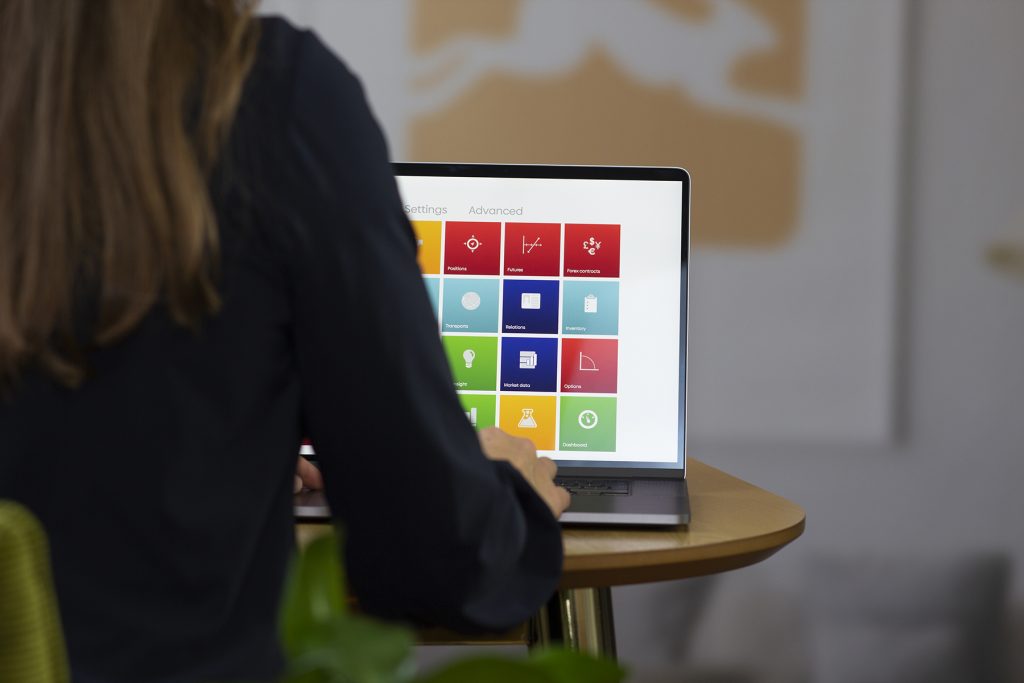Traders, sellers and buyers of commodities tend to focus on the Commodity Trade- or CT-part of CTRM solutions. That seems obvious enough, as Commodity Trade more astutely describes the day-to-day, whereas RM or Risk Management is just a part of that. Lest we forget that RM is in actuality 50 percent of the full abbreviation, we will now talk Risk Management. Or, more precisely, commodity market risk in general, price risk in particular, and of course how it all relates to Agiboo and our flagship CTRM software for soft and agricultural commodities, Agiblocks.
As with every investment in every sector, there are risks involved when trading commodities, even when it’s your actual business and not a portfolio strategy. It’s easy to picture these risks when talking about mining and minerals like gold, steel and coal, or when discussing energy sectors like oil, gas and electricity. The agricultural sector too has its fair share of market risks though, whether it be in sectors like wheat, cotton and sugar, or related to coffee and cocoa beans. Luckily, risk can be managed – to a degree.
Commodity Risk Management
Commodity Risk is defined as any risk an entrepreneur faces due to changes in prices or any other variables related to any particular commodity. The management-part relates to any and all strategies applied to hedge or minimalize these risks. For price risks, those strategies include anything from futures, options and forwarding contracts, to storing and price pooling – but there are several other types of market risk besides price changes alone.
There are a number of parties exposed to commodity market risks, such as producers and manufacturers, exporters and importers and traders. The exposure level to these risks differs per party as do the measures to minimize these risks. There are different specific risks per commodity market, but there are also common risks, which can be found on any type of commodity market. To successfully manage these risks and minimize their effect, a keen understanding of these risks is essential. In the next paragraph, we will therefore briefly discuss several, before having a more in-depth view of one in particular – again, price risk. You may notice though that prices tend to play a big part in most of them.
Quantity Risk
The short version of quantity risk it that it’s due to changes in availability. Sudden scarcity can skyrocket prices, whereas an abundance of any good or commodity tends to bring them down. Generally speaking, it’s mainly producers and manufacturers who are in a position where quantity risks become a factor to take into consideration. This form of risk is based on the quantity of products realized by a producer. When he expects a high demand for a certain product and he produces a quantity of his products, he needs to be sure he is able to sell these products. Should the demand decline, he would end up with an amount of product for which there is no demand or he must sell his products for a much lower price and thus gain only a small profit or even a loss. To mitigate quantity risks, a producer can sell futures contracts, thereby insuring his products are sold at an acceptable price.
Another form of quantity risk arises when hedging commodities. To minimize risks, participants on the market may choose to hedge risks by using futures contracts. The use of futures however can create an extra risk on itself. Due to the standard size of futures contract, an out-of-balance may occur between the futures size and the number of products that need to be hedged. This can result in a portion of your products not being hedged or the hedge covering more production than required. Another risk involving hedging is the amounts of product you wish to hedge. In many cases only a portion of the production risk will be hedged. This brings the risk of uncertainty about the amount to hedge and can result in over or under hedging of a commodity.
Basis Risk
This is a risk that occurs when hedging a commodity to minimize the effects of price fluctuations. The risk occurs when the basis or the difference between the spot and futures price, changes between the time a hedge is placed and lifted. Depending on the direction of the basis changes, it will be beneficial to one position and detrimental to the other position. Due to the basis being fairly stable, the potential loss or gain can be predicted with some degree of certainty. This type of risk cannot be eliminated via hedging, but due to its predictability can be calculated into the risk assessment.
Speculative Risk
When investing in the commodity market one is always exposed to speculative risks, because there is no guarantee an investment will make a profit or loss. We’ve addressed this in our article on hedging: in economics and finance, as well as in life, things are never one hundred percent certain. The level of speculative risk can differ per commodity.
Commodities with a high volatility also have a higher speculative risk, because the price will move significantly, which can result in large profits or losses. Before making any investments, it is important to have a good understanding of the factors that influence the price of a commodity. This way an assessment can be made as to whether an investment is likely to make a profit or that it has a high chance to result in a loss. This will help decide how to operate on the market and minimize the speculative risk.
Geopolitical Risk
Some natural resources can only be found in certain parts of the world. In these situations, companies planning to extract these natural resources must consider the risks involved in working with the government of a country. To gain access to these resources, a lot of aspects must be considered and worked out with a government.

Such aspects are tax structures, environmental concerns, license agreements and indigenous employers. All these factors can increase the costs considerably and thus must be considered whether it is still profitable. These aspects can change along the way due to political decisions and therefore the political climate must be monitored constantly. In extreme cases, the instability of a country causes great risks, especially in the case of rioting and or coups. Such risks are very difficult to prevent.
Closely associated to geopolitical risk is regulatory risk: the risk that a change in laws and regulations will have an impact on the business, sector or market. Changes in laws or regulations can for instance vastly increase the cost of operation, alter the market in terms of competition or reduce interest in any given product.
Another considerable risk is the potential nationalization of the commodity. When a country decides to nationalize the natural resource, companies who have invested greatly in extracting the resource will now be without the access to the resource. It is therefore important to maintain good relations with the government, to minimize this type of risk.
Price Risk
When entering any commodity market, it is vital to take these market risks into account and have a structured risk management system set up. This way, precautionary measures can be taken to limit the risks or determine whether or not possible profits outweigh expected risk.
We now return to price risk. Price variations are the most well-known risk in commodities, as you might have guessed. Producers, manufacturers and consumers are all affected by it.
At Agiboo, one of the foremost things we have noticed during all our years of developing and perfecting a suitable CTRM solution – that is as much about the RM as it is about the CT, or better yet simplifies the RM so you can focus on the CT – is the diversity of how people perceive market price risk and more prominently, the diversity on how they manage it. There is no good or bad way, necessarily – but given that market price risk management has a long history there is still an apparent lack of standardization that shows us how complex it is to standardize and find a real common approach, despite the existence of professional exchanges and their focus on derivatives as the answer.
Risk Management Strategies
What we have concluded is that it is not the available toolset that creates a diverse approach, but rather the individual translation of one’s situation towards that tool. Apparently, the full set of variables that define your situation is what make it so complex to choose derivatives, choose how to apply them, and build a risk management procedure out of it. As a corollary, feedback from customers on their derivates strategy continues to vary – greatly. Where one is not using them at all, the other has a complete range of instruments such as futures, options and OTC’s.
The answer usually lies somewhere in the middle, and depends on the type of business; a trader of sugar has other interests than a manufacturer who uses cotton to make jeans or a producer who buys cocoa to make specialty chocolate. Furthermore, these commodities have their own specifics and dependencies of opportunities and physical limitations. And then there’s the geographical location; a local approach can demand a completely different market price risk management as compared to international operations.
As a purchaser of commodities looking to make a finished product, you probably don’t want to speculate on a lower price. But how do you mitigate risks, and protect your interests? A direct sell of a future along with your physical purchase contract? The long option of futures? Should you approach a financial institute to create a fancy OTC contract with the help of expensive experts? And will the fluctuation of the physical price be in line with the derivative? How to manage the differential between the two, as that is a risk as well?
All those questions are all well and fine when it’s just one contract. You could sit down, have it all worked out in one afternoon and be sure that your market price risk is covered. But what about multiple contracts? Who are all interrelated? How do I simply and streamline my risk management process without limiting the practical choice of instruments…?
Agiblocks to the rescue!
One of the main reasons we have developed Agiblocks CTRM answer exactly that question. We offer a simplification of the views and risk control, while still managing a multitude of sophisticated and complex contracts. Allowing you to focus on the actual deal rather than all the underlying risk control and risk management. Our objective is to offer the full picture with just a single touch. It turned out to be quite a challenge, to create something which can capture all this flexibility and possibilities in a single software solution. We did it anyway.

We wanted to go the extra mile and facilitated mechanisms to put up hedge requirements as a result of physical trades or purchases. We chose to do so for specific markets, because understanding and facilitating all the intricate specifics of a given commodity is key – and an absolute necessity to provide our clients the maximum freedom and opportunity to use the best derivatives for their specific situation without worrying about how to control the risk.
Agiblocks CTRM solution can help you to hedge your bets in a commodity market, any commodity market, that is full of uncertainties and risk. Are you a trader, buyer or seller in soft and/or agricultural commodities and do you want to know more about commodity trading and our next-generation CTRM solution? The full range of Agiblocks functionality is available within our newly improved demo environment.
Familiarize yourself with the tools and features of our powerful and agile software solution and find out how you can improve your daily routine.

